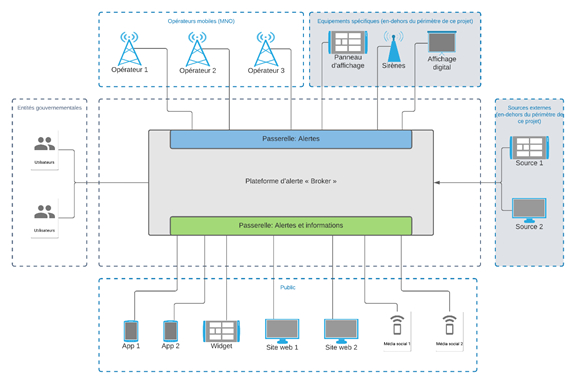
On Friday 4 March 2022, Luxembourg's Ministry of the Interior and the High Commission for National Protection (HCPN) announced that the Luxembourg government is setting up a new system to alert the population in the event of imminent danger.
The recent bad weather, and particularly that of July 2021, which had an impact on the entire population, affirmed the government's decision in 2020 on the continuation of work for the establishment of a new public alert system. During a technical briefing on 4 March 2022, the conceptualisation of a multi-channel alert system was presented, the objective of which is to maximise the coverage of the population by using a single platform that will be linked to multiple communication channels. Thus, alerts from national authorities will be sent through this platform.
Alerting the population is an essential tool to allow citizens to prepare for an event, fortuitous or not, and to take the useful and necessary precautions to save people and property. The mission of alerting the population, which since 2018 has come under the responsibility of the Minister of the Interior, is also aimed to create resilience and prevention during an event.
In order to achieve a global, national, multi-channel and efficient system, a design project has been defined over the last few months which is based on an approach and a macro-planning aimed at the state administrations which disseminate alerts.
To date, Luxembourg has a "GouvAlert.lu" mobile application, launched in 2018, and a limited national and zonal SMS sending system, means which were used on 18 February 2022 during the red alert issued by MeteoLux due to strong winds. The mobile application will initially benefit from an update to improve ergonomics, in particular for the display of alerts, and will include new functionalities necessary for the implementation of a new strategy of regular tests. of the alert system.
Following previous experiences and the analyses of the last few months, the analysis and design project noted that the alert system should be based on two distinct pillars, in addition to the improvement of existing tools, namely, on the one hand, the overhaul of the technologies ensuring the distribution of messages for mobile phones and on the other hand, the definition of a governance allowing all the actors concerned to use the solution in a coordinated and standardised way.
The setting up by the mobile network operators of the technical infrastructure allowing the sending of geo-located SMS (location based SMS) and messages by cell broadcast will be accompanied by the setting up of establishment of a central alert platform which will constitute the core of the future population alert solution and will be linked to the various infrastructures, thus ensuring structured and coordinated communication of the messages disseminated for maximum coverage of the population. The central alert platform is designed to be expandable and may, in the event of future developments, allow the addition of other means of communication such as the media and social networks.
Mobile network operators are involved throughout the process in order to contribute their know-how.








